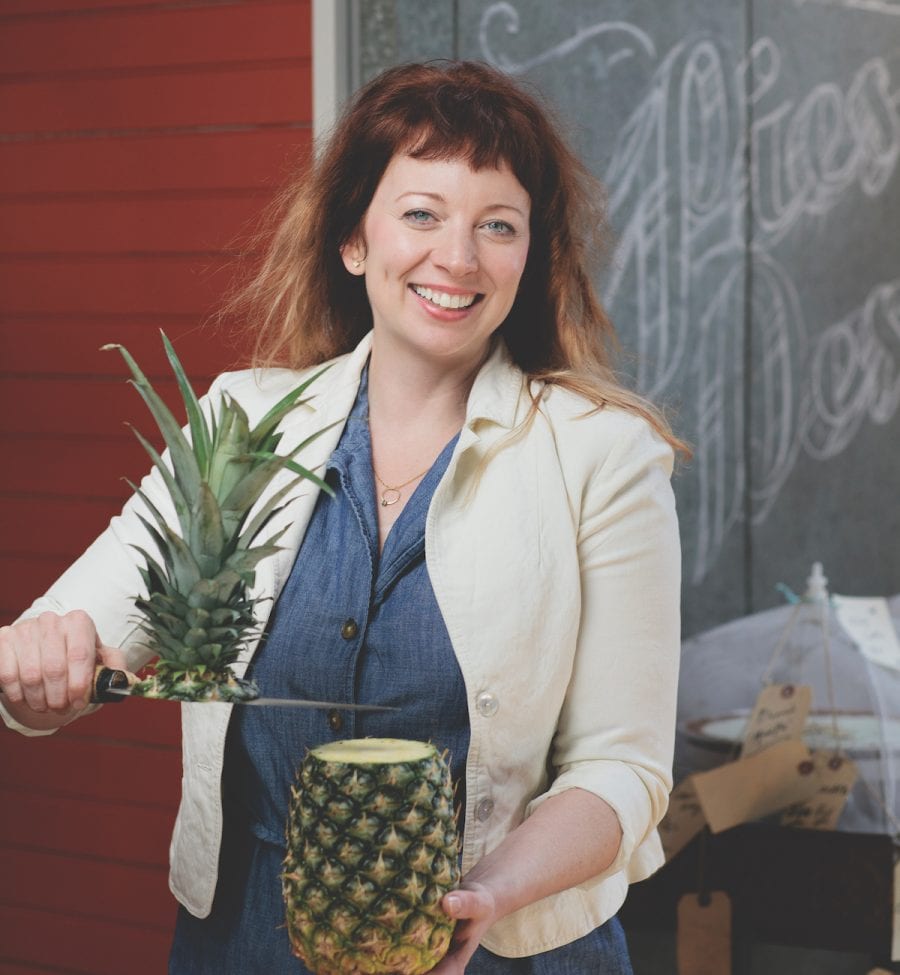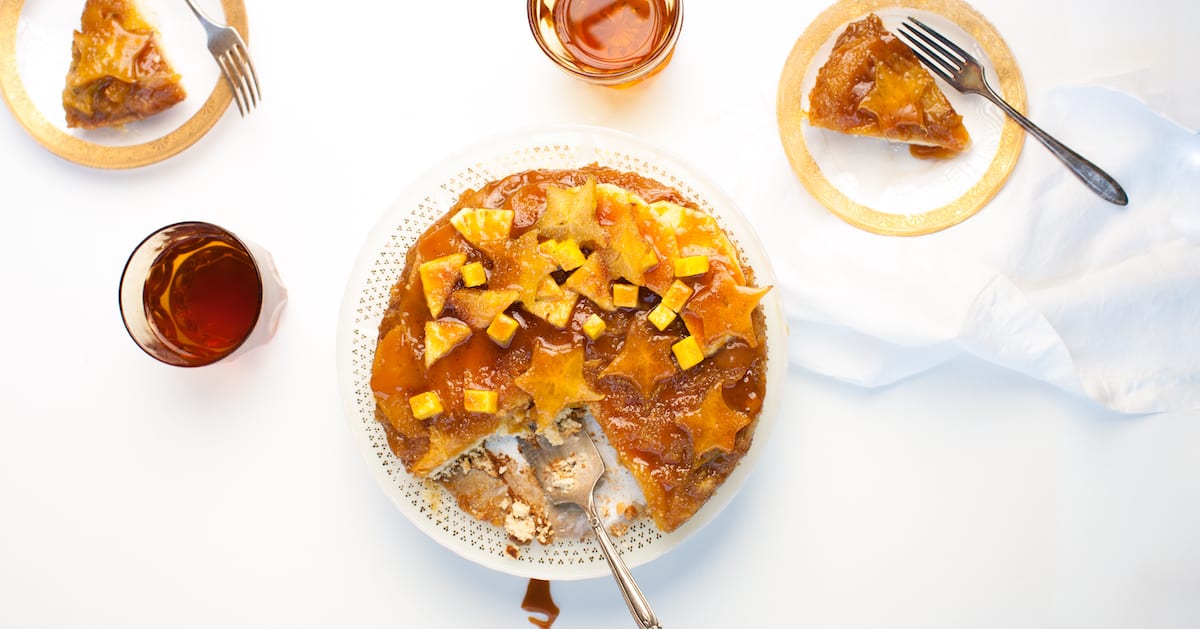Retro Cake Revisited
The visual triumph of a pineapple upside-down cake is perhaps one of the reasons it remains a most iconic vintage dessert. Buttery, caramelized sugars and golden pineapple rings studded with maraschino cherries are baked into a classic yellow cake, then inverted to reveal its showy layer. Upside-down cakes gained American popularity in the 1800s under the name spider cake, when a cake with a caramelized fruit bottom was baked in a cast-iron pan with spindly legs, known as a spider. When baked in a traditional cast-iron pan, it took on the moniker of skillet cake. These cakes were often baked with apples, cherries, or dried fruit, before the canned pineapple (thanks to James Dole and his Hawaiian Pineapple Company) stole the show in the early twentieth century.
Ashley Capp’s Pineapple Upside-Down Cake
Ashley Capps, formerly the pastry chef at Buxton Hall Barbecue in Asheville, North Carolina, grew up eating pineapple upside-down cake warm out of the skillet with vanilla ice cream. Capps dug deep into her best memories to fashion a retro-cake with heart and uses her pastry pedigree to thoughtfully craft each component. She makes a mosaic of pineapple wedges and fills the crevices with pineapple mash. All the leftover juice goes into the buttermilk-spiked batter for maximum pineapple flavor.

Susannah Gebhart’s Rosemary-Pineapple Rye Pound Cake

Over in West Asheville, Susannah Gebhart, owner of Old World Levain (OWL) Bakery uses a rye pound cake batter for a beautifully constructed rustic version. In addition to pineapples and tart cherries, Gebhart adds rosemary and citrus zest for a sophisticated departure that’s indicative of the OWL aesthetic. “We love to add herbal and floral elements to our pastries,” says Gebhart. “The astringency of the rosemary works well with the sweetness of the pineapple.”
share
trending content
-
In the Spirit: Distillery of Modern Art (DoMA) | Listen
by Amber Chase -
Asian Food Booms In the South
by TLP Editors -
Stirrups Restaurant Offers Fine Dining Like Nowhere Else
-
Our Summer 2024 Issue is Here!
by Erin Byers Murray -
9 Noteworthy Kentucky Restaurants | Listen
by TLP Editors
More From At the Table
-
Rasam is the Spice of Life
-
High Tea, Southern Style
-
10 Leftover Recipes To Clean Out Your Fridge
-
Country Captain Shrimp and Grits
-
10 Nonalcoholic Drinks for Dry January





